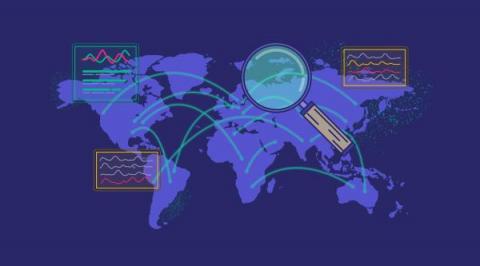Operations | Monitoring | ITSM | DevOps | Cloud
Latest News
The Future of Observability: Navigating Challenges and Harnessing Opportunities
Observability solutions can easily and rapidly get complex — in terms of maintenance, time and budgetary constraints. But observability doesn’t have to be hard or expensive with the right solutions in place. The future of your observability can be a bright one.
How to get actionable insights from your data
“When you peel back business issues, more times than not, you will find that the root cause is directly tied to data problems,” says Matthew Minetola, CIO at Elastic®. In today's world, all companies, new and old, are awash in data from multiple sources — stored in multiple systems, versions, and formats — and it’s getting worse all the time.
IT Orchestration vs. Automation: What's the Difference?
Data Quality Metrics: 5 Tips to Optimize Yours
Amid a big data boom, more and more information is being generated from various sources at staggering rates. But without the proper metrics for your data, businesses with large quantities of information may find it challenging to effectively and grow in competitive markets. For example, high-quality data lets you make informed decisions that are based on derived insights, enhance customer experiences, and drive sustainable growth.
Code, Coffee, and Unity: How a Unified Approach to Observability and Security Empowers ITOps and Engineering Teams
How to Log HTTP Headers With HAProxy for Debugging Purposes
HAProxy offers a powerful logging system that allows users to capture information about HTTP transactions. As part of that, logging headers provides insight into what's happening behind the scenes, such as when a web application firewall (WAF) blocks a request because of a problematic header. It can also be helpful when an application has trouble parsing a header, allowing you to review the logged headers to ensure that they conform to a specific format.
Lookup Tables and Log Analysis: Extracting Insight from Logs
Extracting insights from log and security data can be a slow and resource-intensive endeavor, which is unfavorable for our data-driven world. Fortunately, lookup tables can help accelerate the interpretation of log data, enabling analysts to swiftly make sense of logs and transform them into actionable intelligence. This article will examine lookup tables and their relationship with log analysis.
Simplifying Data Lake Management with an Observability Pipeline
Data Lakes can be difficult and costly to manage. They require skilled engineers to manage the infrastructure, keep data flowing, eliminate redundancy, and secure the data. We accept the difficulties because our data lakes house valuable information like logs, metrics, traces, etc. To add insult to injury, the data lake can be a black hole, where your data goes in but never comes out. If you are thinking there has to be a better way, we agree!
A Complete Guide to Tracking CDN Logs
The Content Delivery Network (CDN) market is projected to grow from 17.70 billion USD to 81.86 billion USD by 2026, according to a recent study. As more businesses adopt CDNs for their content distribution, CDN log tracking is becoming essential to achieve full-stack observability. That being said, the widespread distribution of the CDN servers can also make it challenging when you want visibility into your visitors’ behavior, optimize performance, and identify distribution issues.











